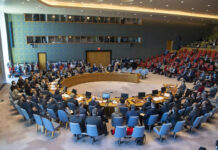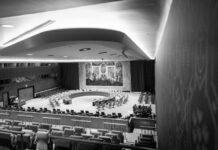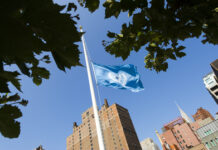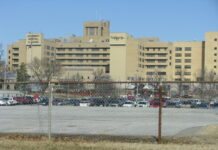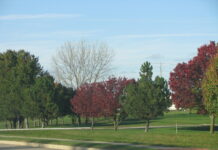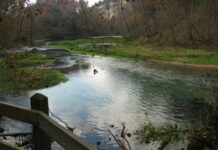Photo credit: DiasporaEngager (www.DiasporaEngager.com).
Summary
What is already known about this topic?
In July 2023, the Food and Drug Administration approved nirsevimab, a long-acting monoclonal antibody, for prevention of respiratory syncytial virus (RSV) lower respiratory tract disease in infants.
What is added by this report?
On August 3, 2023, the Advisory Committee on Immunization Practices recommended nirsevimab for infants aged <8 months born during or entering their first RSV season and for infants and children aged 8–19 months who are at increased risk of severe RSV disease entering their second RSV season.
What are the implications for public health practice?
Nirsevimab can prevent severe RSV disease among infants and children aged <20 months at increased risk for severe RSV disease.
Abstract
Respiratory syncytial virus (RSV) is the leading cause of hospitalization among U.S. infants. In July 2023, the Food and Drug Administration approved nirsevimab, a long-acting monoclonal antibody, for passive immunization to prevent RSV-associated lower respiratory tract infection among infants and young children. Since October 2021, the Advisory Committee on Immunization Practices (ACIP) Maternal and Pediatric RSV Work Group has reviewed evidence on the safety and efficacy of nirsevimab among infants and young children. On August 3, 2023, ACIP recommended nirsevimab for all infants aged <8 months who are born during or entering their first RSV season and for infants and children aged 8–19 months who are at increased risk for severe RSV disease and are entering their second RSV season. On the basis of pre–COVID-19 pandemic patterns, nirsevimab could be administered in most of the continental United States from October through the end of March. Nirsevimab can prevent severe RSV disease among infants and young children at increased risk for severe RSV disease.
Introduction
In July 2023, the Food and Drug Administration (FDA) approved nirsevimab (Beyfortus, Sanofi and AstraZeneca), a long-acting monoclonal antibody, for the prevention of respiratory syncytial virus (RSV)–associated lower respiratory tract infection (LRTI) among infants and children aged <24 months (1).* Nirsevimab is administered as a 1-dose intramuscular injection shortly before or during the RSV season (typically fall through spring).† Since October 2021, the Advisory Committee on Immunization Practices (ACIP) Maternal and Pediatric RSV Work Group (Work Group) has reviewed data on RSV among infants and young children and evidence regarding the safety and efficacy of nirsevimab, and assessed the quality of the efficacy and safety evidence using the Grading of Recommendations, Assessment, Development, and Evaluations (GRADE) framework (2,3). The Evidence to Recommendation (EtR) Framework was used to develop recommendations (4,5). Evidence regarding potential use of nirsevimab was presented to ACIP at meetings during June 2022–August 2023. On August 3, 2023, ACIP recommended nirsevimab for infants aged <8 months who are born during or entering their first RSV season and for infants and children aged 8–19 months who are at increased risk for severe RSV disease and are entering their second RSV season.
RSV Among Infants and Young Children
RSV infection is the leading cause of hospitalization among U.S. infants (6); most children are infected during the first year of life, and nearly all have been infected by age 2 years (7,8). Infants with RSV infection frequently develop bronchiolitis, an LRTI that can be severe and result in hospitalization. Approximately 50,000–80,000 RSV-associated hospitalizations (9,10) and 100–300 RSV-associated deaths (11,12) occur annually among U.S. infants and children aged <5 years.
The rate of RSV-associated hospitalization among infants born at ≤30 weeks’ gestation (premature) is three times that of term infants (13). Premature infants also have higher rates of RSV-associated intensive care unit (ICU) admission (14). Although prematurity is a recognized risk factor for RSV-associated hospitalization, RSV is also the leading cause of hospitalization among healthy term infants. An estimated 79% of infants and children aged <2 years hospitalized with RSV have no underlying medical conditions (13).
Before licensure of nirsevimab, the only FDA-approved product to prevent severe RSV disease among infants and young children was palivizumab, another monoclonal antibody. However, the American Academy of Pediatrics (AAP) recommends palivizumab only for children with certain underlying medical conditions (comprising <5% of all infants), and its use is further limited by high cost and the requirement for monthly dosing (15,16).
Methods
Since October 2021, the Work Group has conducted a systematic literature search and reviewed available evidence regarding the efficacy and safety of nirsevimab (2,3). The Work Group considered a priori outcomes that were critical or important to policy decisions.§ For infants born during or entering their first RSV season, evidence regarding efficacy and safety was derived from multicountry trials¶ that randomized infants, in a 2:1 ratio, to receive nirsevimab or placebo; a phase 2b trial that enrolled 1,453 preterm infants born at 29–34 weeks’ gestation (phase 2b trial) (17); and a phase 3 trial that enrolled 3,012 late preterm and term infants born at ≥35 weeks’ gestation (phase 3 trial) (18).** For children at increased risk for severe disease entering their second RSV season, evidence regarding efficacy and safety was obtained from a multicountry trial that randomized children to receive nirsevimab or palivizumab (19). The Work Group used the GRADE approach to assess the certainty of evidence for outcomes related to nirsevimab, rated on a scale of very low to high certainty (2,3). The Work Group then used the EtR Framework to guide its deliberations on recommendation of nirsevimab, reviewing data on the public health problem, benefits and harms, value to the target population, acceptability to key stakeholders, feasibility, resource use, and equity (4,5).
Nirsevimab Efficacy and Safety
Among infants aged <8 months who were born during or entering their first RSV season, efficacy was evaluated through 150 days after injection. For the GRADE assessment, results from the phase 3 and phase 2b trials were pooled (17,18). Only infants who received the recommended dose of nirsevimab were included in pooled estimates.†† Pooled efficacy in preventing medically attended RSV-associated LRTI§§ was 79.0% (95% CI = 68.5%–86.1%; 31 of 2,579 in nirsevimab arm and 80 of 1,293 in placebo arm), efficacy in preventing RSV-associated LRTI with hospitalization was 80.6% (95% CI = 62.3%–90.1%; 12 of 2,579 in nirsevimab arm and 33 of 1,293 in placebo arm), and efficacy in preventing RSV-associated LRTI with ICU admission was 90.0% (95% CI = 16.4%–98.8%; one of 2,579 in nirsevimab arm and six of 1,293 in placebo arm). No deaths attributable to RSV were reported in either trial.¶¶ The incidence of serious adverse events*** was not increased in the nirsevimab arm compared with that in the placebo arm.††† The overall evidence certainty using GRADE criteria was rated as moderate. The GRADE evidence profile and supporting evidence for the EtR Framework are available at https://www.cdc.gov/vaccines/acip/recs/grade/nirsevimab-season1-rsv-infants-children.html and https://www.cdc.gov/vaccines/acip/recs/grade/nirsevimab-season1-rsv-infants-children-etr.html.
Among infants at increased risk for severe disease who are entering their second RSV season, evidence was derived from a single trial that enrolled 615 preterm infants born at <35 weeks’ gestation who were eligible to receive palivizumab and 310 infants with either chronic lung disease requiring medical intervention within 6 months of randomization or hemodynamically significant congenital heart disease (CHD) (19). Participants were randomized to receive nirsevimab or palivizumab.§§§ Efficacy against medically attended RSV-associated LRTI was extrapolated from pharmacokinetic data.¶¶¶ Nirsevimab concentration levels among infants and children aged ≤24 months with chronic lung disease or CHD who received 200 mg nirsevimab entering their second RSV season were comparable to levels among those who received 50 mg if weighing <5 kg (<11 lb) and 100 mg if weighing ≥5 kg (≥11 lb) in their first RSV season. During the participants’ second RSV season, the incidence of serious adverse events did not significantly differ between the nirsevimab and palivizumab arms. The overall evidence certainty using GRADE criteria was rated as very low. Because nirsevimab appears to have efficacy as high as, or higher than, palivizumab (although no head-to-head efficacy trials exist) (20), and is assumed to be less costly (21), replacing palivizumab with nirsevimab for the palivizumab-eligible children entering their second season is expected to be cost saving. The GRADE evidence profile and supporting evidence for the EtR Framework are available at https://www.cdc.gov/vaccines/acip/recs/grade/nirsevimab-season2-rsv-infants-children.html and https://www.cdc.gov/vaccines/acip/recs/grade/nirsevimab-season2-rsv-infants-children-etr.html.
Cost Effectiveness
The cost effectiveness for use of nirsevimab for infants aged <8 months born during or entering their first RSV season (at $445 per dose) was estimated to be $102,811 per quality adjusted life year (21). Because infants and children entering their second RSV season are at reduced risk for severe RSV disease compared with infants during their first RSV season, cost effectiveness for use of nirsevimab for the general population of children entering their second season (at $890 per dose)**** was estimated to be $1,557,544 per quality adjusted life year (21). Data to assess the incidence of severe RSV disease and death by type of chronic disease during their second RSV season are limited (21), as are data on efficacy and safety of nirsevimab among infants and children in their second RSV season.
Recommendations for Use of Nirsevimab
ACIP recommends 1 dose of nirsevimab for all infants aged <8 months born during or entering their first RSV season (50 mg for infants weighing <5 kg [<11 lb] and 100 mg for infants weighing ≥5 kg [≥11 lb]). ACIP recommends 1 dose of nirsevimab (200 mg, administered as two 100 mg injections given at the same time at different injection sites) for infants and children aged 8–19 months who are at increased risk for severe RSV disease and entering their second RSV season†††† (Box). The recommendations for nirsevimab apply to infants and children recommended to receive palivizumab by AAP.§§§§ These recommendations will be updated as new evidence becomes available.
Clinical Guidance
Timing of Nirsevimab Administration
Providers should administer nirsevimab to infants aged <8 months and to infants and children aged 8–19 months who are at increased risk for severe RSV disease beginning shortly before the start of the RSV season. On the basis of pre–COVID-19 pandemic patterns, nirsevimab could be administered in most of the continental United States from October through the end of March. Infants born shortly before or during the RSV season should receive nirsevimab within 1 week of birth. Nirsevimab administration can occur during the birth hospitalization or in the outpatient setting. Optimal timing for nirsevimab administration is shortly before the RSV season begins; however, nirsevimab may be administered to age-eligible infants and children who have not yet received a dose at any time during the season. Only a single dose of nirsevimab is recommended for an RSV season. Infants with prolonged birth hospitalizations related to prematurity or other causes should receive nirsevimab shortly before or promptly after hospital discharge.¶¶¶¶ No evidence is available to support use of nirsevimab for prevention of hospital-acquired RSV infection, and nirsevimab is not recommended for this indication.
Because the timing of the onset, peak, and decline of RSV activity might vary geographically, providers can adjust administration schedules based on local epidemiology. RSV seasonality in tropical climates (including southern Florida, Guam, Hawaii, Puerto Rico, U.S.-affiliated Pacific Islands, and U.S. Virgin Islands) might differ from that of most of the continental United States or be unpredictable (21–23). In Alaska, RSV seasonality is less predictable, and the duration of RSV activity is often longer than the national average duration (24). Providers in these jurisdictions should consult state, local, or territorial guidance on timing of nirsevimab administration.
Coadministration with Routine Childhood Vaccines
On the basis of limited data from clinical trials, coadministration of nirsevimab with routine vaccines resulted in a similar rate of adverse events compared with administration of vaccines alone (25). Nirsevimab is not expected to interfere with the immune response to other routine childhood immunizations (26). In accordance with general best practices for immunization, simultaneous administration of nirsevimab with age-appropriate vaccines is recommended (27).
Infants and Children Aged 8–19 Months at Increased Risk for Severe RSV Disease and Entering Their Second RSV Season
Infants and children aged 8–19 months who are at increased risk for severe RSV disease and who are entering their second RSV season (timing of season as defined above) are recommended to receive nirsevimab. Replacing palivizumab with nirsevimab is expected to be cost saving, and ACIP recommends nirsevimab for eligible children entering their second RSV season, similar to groups of children recommended by AAP for palivizumab during their second RSV season (16) (Box). In addition, research suggests that some American Indian or Alaska Native (AI/AN) children experience high rates of severe RSV disease. A recent study found that incidence of RSV-associated hospitalization among some AI/AN children aged 12–23 months was four to 10 times that of similar-aged children across seven sites in the United States (28). These studies have been limited to specific populations and might not be broadly representative of risk in all AI/AN children. Some AI/AN communities live in remote regions, making transportation of children with severe RSV more challenging (16). Given the available evidence, ACIP also recommends nirsevimab for AI/AN children entering their second RSV season.
Precautions and Contraindications
When administering nirsevimab to children with increased risk for bleeding, providers should follow ACIP’s general best practice guidelines for immunization (27). Nirsevimab is contraindicated in persons with a history of severe allergic reaction (e.g., anaphylaxis) after a previous dose or to a product component. Adverse reactions might occur after administration of nirsevimab alone; these reactions may be reported to MedWatch online (https://www.fda.gov/medwatch), by fax, by mail, or by contacting FDA at 1-800-FDA-1088.*****
Adverse reactions might occur after the coadministration of nirsevimab with a vaccine; these reactions should be reported to the Vaccine Adverse Event Reporting System (VAERS), and reports should specify that the patient received nirsevimab on the VAERS form.††††† Reports can be submitted to VAERS online, by fax, or by mail. Additional information about VAERS is available by telephone (1-800-822-7967) or online (https://vaers.hhs.gov). When adverse reactions that occur after the coadministration of nirsevimab with a vaccine are reported to VAERS, additional reporting of the same adverse reactions to MedWatch is not necessary.
Acknowledgments
Voting members of the Advisory Committee on Immunization Practices (in addition to listed authors): Lynn Bahta, Minnesota Department of Health; Wilbur H. Chen, University of Maryland School of Medicine; Sybil Cineas, Warren Alpert Medical School of Brown University; Matthew F. Daley, Kaiser Permanente Colorado; Grace M. Lee, Stanford University School of Medicine; Jamie Loehr, Cayuga Family Medicine; Veronica V. McNally, Franny Strong Foundation; Katherine A. Poehling, Wake Forest School of Medicine; H. Keipp Talbot, Vanderbilt University Medical Center.
ACIP Pediatric/Maternal RSV Work Group
Chair: Sarah S. Long, Drexel University College of Medicine; ACIP Members: Oliver Brooks, Watts Healthcare Corporation; Camille N. Kotton, Harvard Medical School; Pablo J. Sánchez, The Research Institute at Nationwide Children’s Hospital; Consultants: Kevin Ault, Western Michigan University; Carol Baker, McGovern Medical School, University of Texas Health Science Center; Helen Chu, University of Washington; Daniel Feikin, World Health Organization; Natasha Halasa, Vanderbilt University; Denise Jamieson, Emory University School of Public Health; Cody Meissner, Dartmouth Geisel School of Medicine; Liaison Representatives: Nicole Chaisson, American Academy of Family Physicians; Molly Howell, Association of Immunization Managers; Brenna L. Hughes, American College of Obstetricians and Gynecologists; James McAuley, Infectious Diseases Society of America; Sean T. O’Leary, American Academy of Pediatrics; Jennifer Schuster, Pediatric Infectious Diseases Society; Patsy Stinchfield, National Foundation for Infectious Diseases; Ex-officio Members: Judy Beeler, Food and Drug Administration; Yodit Belew, Food and Drug Administration; Terry Dalle-Tezze, Department of Health and Human Services, Health Resources and Services Administration; Nicholas Geagan, Food and Drug Administration; April Killikelly, Public Health Agency of Canada; Sonnie Kim, National Institute of Allergy and Infectious Diseases; Jessica Lee, Centers for Medicare & Medicaid Services; Lucia Lee, Food and Drug Administration; Valerie Marshall, Office of the Assistant Secretary for Health; Winnie Siu, Public Health Agency of Canada; Prabha Viswanathan, Food and Drug Administration; Rachel Zhang, Food and Drug Administration; CDC Leads: Katherine Fleming-Dutra, Jefferson Jones; CDC Contributors: Amadea Britton, Karen R. Broder, Angie Campbell, Doug Campos-Outcalt, Melissa Coughlin, Nicole Dowling, Sally Ezra, Monica Godfrey, Aron Hall, Anne Hause, Fiona Havers, Andrew Leidner, Ruth Link-Gelles, Elizabeth Greene, Jessica MacNeil, Meredith McMorrow, Michael Melgar, Claire Midgley, Noelle-Angelique Molinari, Heidi Moline, Rebecca Morgan, Danielle Moulia, Neil Murthy, Christine Olson, Ismael Ortega-Sanchez, Manisha Patel, Pragna Patel, Amanda Payne, Jamison (Jamie) Pike, Derrell Powers, Mila Prill, Lauren Roper, Hannah Rosenblum, Heather Scobie, Andrea Sharma, David Shay, Tom Shimabukuro, Tami Skoff, Chris Taylor, Naomi Tepper, Stephanie Thomas, Natalie Thornburg, Megan Wallace, Melinda Wharton, Raigan Wheeler, Amber Winn, Patricia (Akpobome) Wodi.
1Coronavirus and Other Respiratory Viruses Division, National Center for Immunization and Respiratory Diseases, CDC; 2Watts Healthcare Corporation, Los Angeles California; 3Nationwide Children’s Hospital, The Ohio State University College of Medicine, Columbus, Ohio; 4Harvard Medical School, Boston, Massachusetts; 5Immunization Services Division, National Center for Immunization and Respiratory Diseases, CDC; 6Drexel University College of Medicine, Philadelphia, Pennsylvania.
Source of original article: Centers for Disease Control and Prevention (CDC) / MMWR (Journal) (tools.cdc.gov).
The content of this article does not necessarily reflect the views or opinion of Global Diaspora News (www.GlobalDiasporaNews.com).
To submit your press release: (https://www.GlobalDiasporaNews.com/pr).
To advertise on Global Diaspora News: (www.GlobalDiasporaNews.com/ads).
Sign up to Global Diaspora News newsletter (https://www.GlobalDiasporaNews.com/newsletter/) to start receiving updates and opportunities directly in your email inbox for free.




